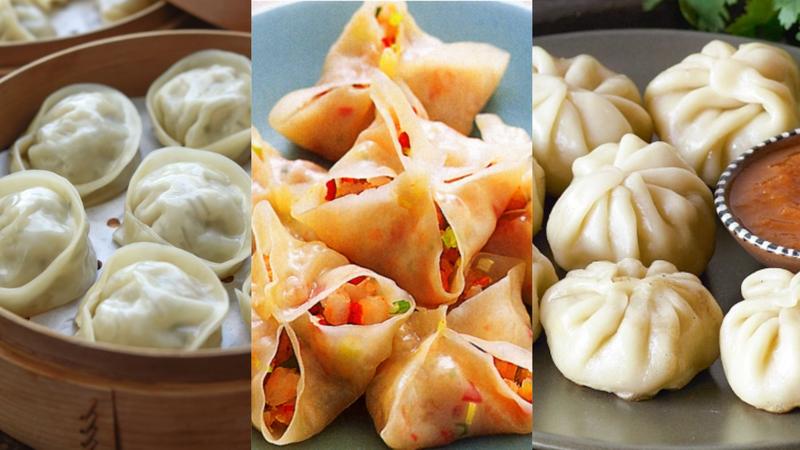Published 18:06 IST, February 3rd 2024
Momos Vs Dumplings Vs Dimsums: Know The Difference Between The Popular Asian Savoury Dishes
Momos, dumplings and dim sums are often used interchangeably but have a lot of differences. Know about what sets the savoury dishes apart.

Advertisement
The debate of the difference between momos, dim sums and dumplings has been long discussed. while the dishes are often used interchangeably, but the difference between them is not commonly known. Each refers to a distinct culinary delight, representing diverse cultural origins and preparation methods. Know what sets these savoury parcels apart.
Momos

Originating from Tibetan cuisine, momos are a type of dumpling that gained popularity across various South Asian regions. These bite-sized delights are typically made with a simple dough of flour, water, and a pinch of salt, filled with a mixture of minced meat (such as chicken, pork, or beef) or vegetables. Momos are often accompanied by a dipping sauce, commonly made with soy sauce, vinegar, and spices. The traditional method involves steaming the momos, resulting in a tender, flavorful treat.
Dimsums

Dimsums are a broad category of bite-sized dishes originating from Chinese cuisine. While dumplings fall under the umbrella of dimsums, not all dimsums are dumplings. Dimsums encompass a variety of steamed, fried, or baked dishes, including dumplings, buns, rolls, and more. Dumplings within dimsums are typically made with a thin wheat dough, filled with various combinations of meat, seafood, or vegetables. Popular dimsum varieties include Shumai, Har Gow, and Xiaolongbao, each with its unique preparation and flavours.
Dumplings

Dumpling is a generic term that encompasses a wide range of filled or unfilled dough pockets found in various global cuisines. Unlike momos and dim sums, the term dumplings doesn't specify a particular regional origin or preparation method. Dumplings can be steamed, boiled, fried, or baked, and their fillings vary widely, from meat and vegetables to sweet ingredients. Popular examples include Italian ravioli, Polish pierogi, and Japanese gyoza.
18:06 IST, February 3rd 2024



